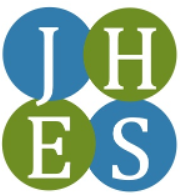The Current State of Nutrition Education in the Philippines
ABSTRACT
The study aimed to identify the nutrition education interventions at the national and local levels; describe the implementation of nutrition education; and determine the facilitating and limiting factors in the implementation of nutrition education. Primary data were collected through a self-administered survey questionnaire, key informant interviews (KII) and focus group discussions (FGD) composed of Provincial and City Nutrition Action Officers (PNAOs) and (CNAOs) of independent component cities and highly urbanized cities in the Philippines. From 1970 to 2015, various actors at different administrative levels were involved in the comprehensive implementation of nutrition education PPAs utilizing radio and print materials. Nutrition education PPAs were integrated with other major programs and activities of nutrition, health, social welfare and development, and agriculture. The key messages focused on infant and young child feeding (IYCF), complementary feeding, and breastfeeding, among others, which were combined and packaged into one PPA (e.g., IYCF and PABASA sa Nutrisyon). Interpersonal communication was found to be most used approach in disseminating information in communities. Limited focal persons at all levels, poor coordination of PPAs, and lack or limited funds to support many of activities hindered the efficient implementationand sustainability of nutrition education. Monitoring and evaluation activities were carried out through feedbacking or updates during monthly or quarterly meetings and annual Program Implementation Review (PIR). Effective implementation and sustainability of nutrition education PPAs at all levels is faced with identifying key players and how these are mainstreamed into their main programs. These require interagency collaboration with well-defined roles and responsibilities, availability of resources to sustain the nutrition education, well-trained and technically capable focal persons to deliver key messages, and appropriate program designs including: duration, content, and budget allocation, approaches/methodologies to specific target audiences and proper monitoring and evaluation to assess performance of nutrition education activities and more importantly, a strong support from Local Chief Executives and their planning functionaries.

The Current State of Nutrition Education in the Philippines
108 downloads0.00 KB
AUTHORS
Lorna Garcia, Ma. Charina Maneja, Belinda Lalap, Marcelina Miranda, Ana Castañeda, Pamela Gonzales, Ana Lorraine Dela Vega, Aileen De Juras, Liza Cabrera, Arnold Abuyog
